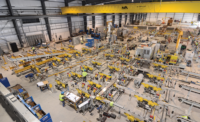The quality of a business system shows its value in good economies and poor ones. A higher profit captured as compared to peers is an easily measured metric. However, better return on investment may be the more demonstrative measure.
Specialty contracting is a unique business. It is nomadic, variable cost and has uncertain accounts receivable. Much is not controllable, including when a project starts and when work is ready to be installed. I could list several others but, in my opinion, it is unique.
Labor is the great wild card in specialty contracting. It largely determines project outcomes. How it is managed, controlled, coached and allocated produces safety, cost, schedule and quality outcomes—good or bad. The business needs a system to focus on labor efficacy.
“Lean” is a productivity system that can be applied to most business situations. Essentially, it decreases cycle time and reduces waste. (Interestingly, Six Sigma is different; it is focused on less variation around a standard.)
Assets—whether current or fixed—along with people being put to efficient use makes for a higher return on investment. That is the promise of “Lean.”
Benefits
Revenue may move higher or lower depending on a contractor’s business and economy, but deriving profits from that revenue is the goal.
From Henry Ford to Edwards Deming to Taiichi Ohno to more contemporary leaders, Lean has evolved into its present-day form. It has matured greatly as an approach. In the last 90 years, companies from many industries have captured and implemented quality processes specific to their business.
What is interesting to note is that Toyota adopted Deming’s work and implemented it specifically to their business.
Many contractors have done the same. Ohno’s famous quote is, ““In the beginning there was a need.” Obviously, it is the same for any business, including construction organizations. There is always a need to improve and innovate. A serious Lean practitioner commits to that. Competition is not unobservant of a stagnant business. They will find a way to beat you eventually.
In the present and in the future, a proven process can only keep the trial and error minimized. I view trial and error as a waste in many ways, including opportunity cost and executive time. Using a standard system that eliminates waste, including labor, gives a greater competitive edge.
One of the benefits of Lean is that it can be implemented on a large or small organization. Size does not matter. This is especially important in that as a firm grows from small to large, Lean is scalable.
Said differently, as projects go from simple to complex in the life of a construction firm, Lean continues to be relevant.
Part of Lean’s success in construction contracting is that it accomplishes two goals.
1) Banning waste.
In our business, we may never receive a premium on our work. We always have to be competitive. The way to reach double-digit net profit before tax is to focus on the cost side. Over a decade, contractors have accomplished this on their own. It has been an informal process but has worked. Using a formal system, the time to reach that goal can be much shorter. The reason is that not only the construction executive but also all employees will think in terms of Lean. Formally adopting a system will encourage employees to work toward the same goal, banning waste, much less trial and error.
2) It captures all processes and improves them over time.
What processes work well is not left to memory; they are documented. A good process typically reduces cycle time.
Moreover, Lean prompts improvement in people and processes. Additionally, Lean respects elegant and inelegant methods alike. That’s fortunate, of course, because construction has plenty of both. Either way, what works is captured until a better way comes along.
div id="articleExtras"




Post a comment to this article
Report Abusive Comment